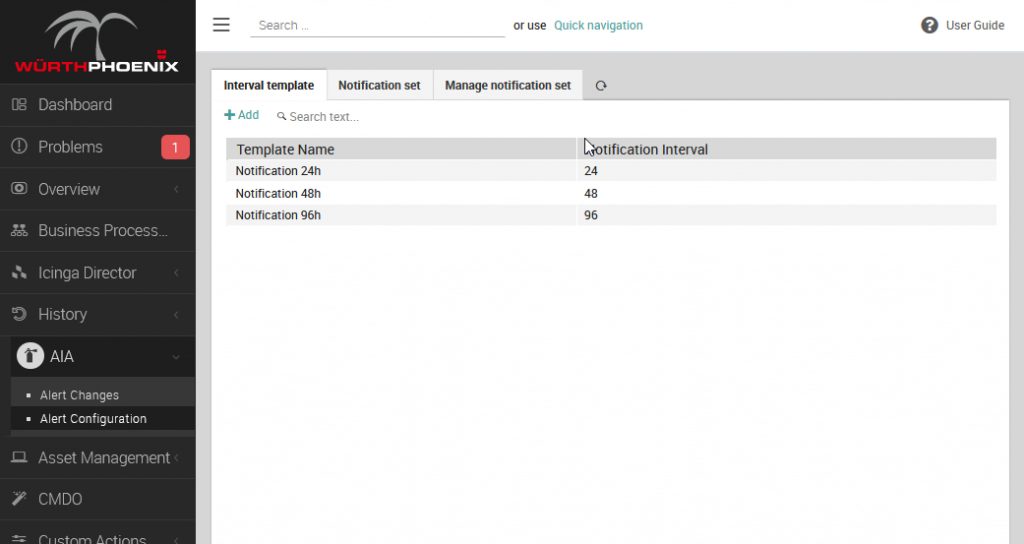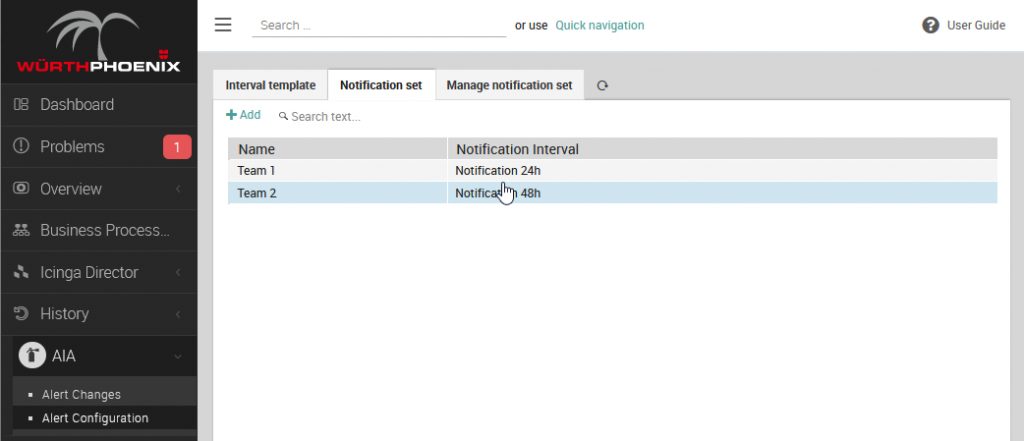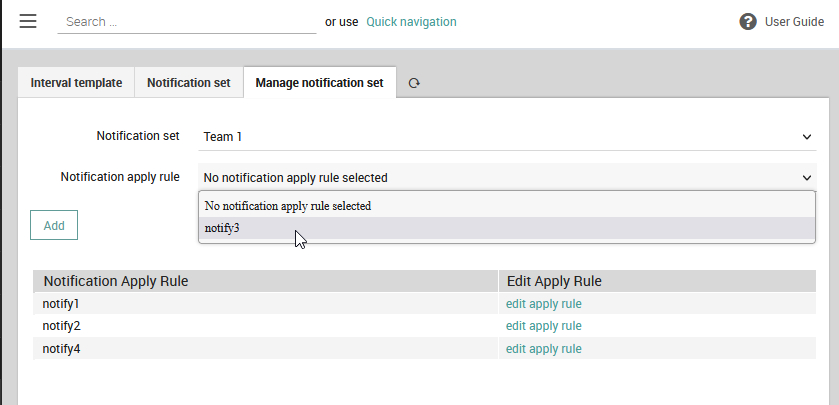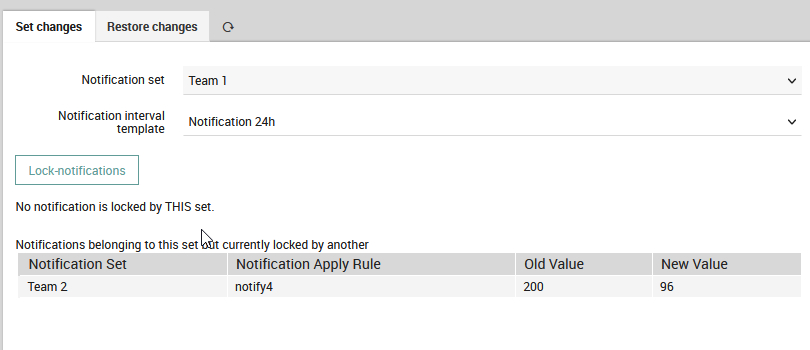In my time at Wuerth Phoenix I’ve worked on upgrading the customactions and ondutymanager neteye modules, as well as developing a new module called AIA, which stands for Alert Interval Adjustment. In this blog post I’ll talk about the AIA module.
The Pitch
Suppose you’re a large company with a vast and complex IT infrastructure. On a Friday afternoon you’re monitoring the status of your IT infrastructure when suddenly an accident occurs in your system. You have a capable IT team, and you’ve correctly configured your NetEye installation by placing a set of alert notifications that trigger whenever some part of your system stops working as intended. But this time a major accident has occurred and you constantly keep getting the alert notifications at certain intervals. You realize that it will take at least a couple of days until you manage to fix everything, and in that time the alert notifications won’t stop arriving.
You could manually update the interval at which each notification appears, and then somehow remember to reset the interval back to its original value once the emergency is resolved, but that would be very time consuming. This is where the AIA module can come in handy.
Using the AIA module, you can organize alert notifications into notification sets and “lock” them by assigning them a new notification interval rate to use for the duration of the emergency. But wait you might be asking, “How do I restore the original interval value once the emergency is over?” No worries on that front, the AIA module remembers the original interval value of each alert notification that it has changed.
“What if I forget to restore the original interval value once the emergency is over?”
We’ve got you covered there as well! When configured properly, the AIA module will notify you when a notification set needs to be restored.
What you Need to Know
Well, the pitch is over and I hope it’s convinced you. But now let’s move on to what you need to know when using the AIA module.
Notification interval template: what these templates define is nothing more than the interval value that will be used by the notification apply rule while it is locked.

Notification set: as you might have already guessed, a notification set is a group of notification apply rules that are logically organized into a group. Each notification set has a default interval template associated with it so that when we want to lock a notification set, we don’t have to pick an interval template, but rather one is already selected for us.


Locked notification set: in the AIA module we say that a notification set is locked when an emergency occurs and we use the AIA module to set the value of one of our interval templates (selected through the GUI) as the interval value of all the notification apply rules belonging to a notification set.

Restore changes: in this section you can see all the locked notification sets and perform the restore operation on these locked notification sets. Restore is the operation by which we reset the notification’s apply rule to its original interval value from before the lock.

One Question You Might Have
With the introduction of the “locked notification set” we get to ask some interesting questions.
“What happens when two notification sets have a notification apply rule in common? “
In the AIA module, as a rule, we don’t allow a user to change the interval value of a notification apply rule that is already locked by a notification set.
Let’s look at an example. Suppose we have two notification sets team-1 and team-2 which both have the notification apply rule notify4 in common. Now suppose that we lock the two notification sets (let’s assume that team-2 is locked before team-1). What will happen is that the apply rule notify4 will first be locked by team-2 and then when we lock team-1 the apply rule notify4 will remain unchanged as it is already locked by team-2.
If a situation of this type ever occurs, the AIA module makes sure to tell the user that the apply rule notify4 belongs to team-1, but is currently locked by team-2.

In doing so we leave the judgement call to the user, so that the user can decide whether to restore the set team-2 and then lock the set team-1 again to change the interval value used by the apply rule notify4.
Conclusion
It’s clear that the AIA module can help us save precious time and resources in case of an emergency. If you feel like there are improvements that could be made, feel free to comment below. Your suggestions might just be integrated into future versions of the module.
This module has not been released as a generally available module due to several dependencies on NetEye-specific libraries, and it must be run on a NetEye release 4.22 or higher.
These Solutions are Engineered by Humans
Did you like this article? Does it reflect your skills? We often get interesting questions straight from our customers who need customized solutions. In fact, we’re currently hiring for roles just like this and other roles here at Würth Phoenix.






